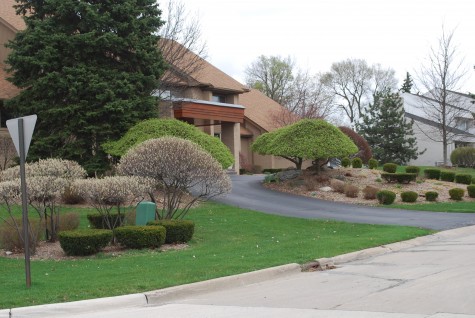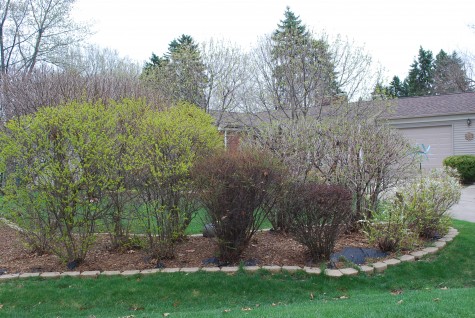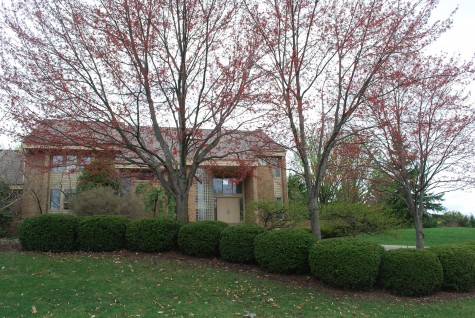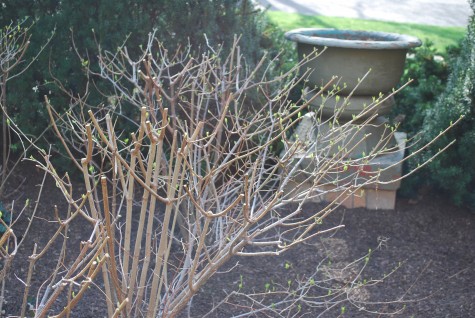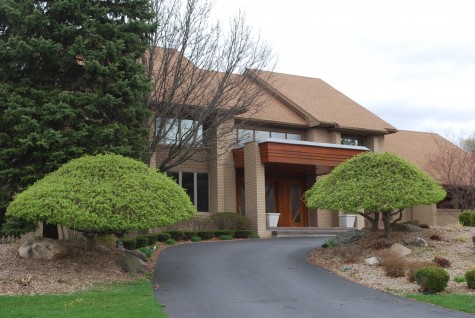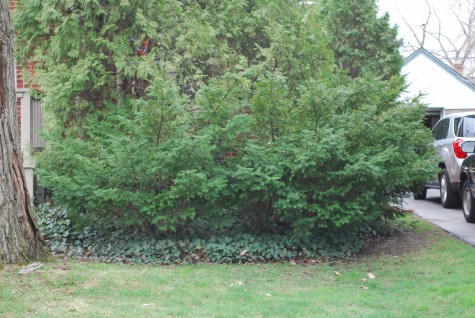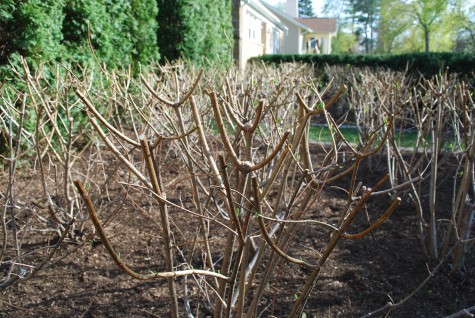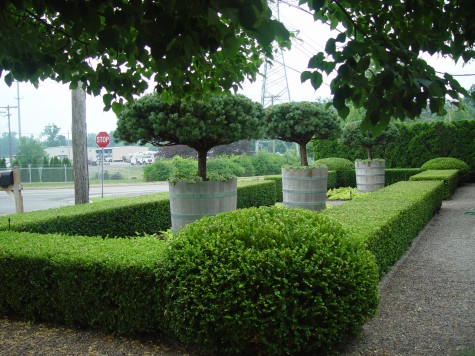 There are plenty of reasons to prune. The branch of a tree, shrub, or rose may be dead, and need removal. It may be growing across the sidewalk, and need some heading back. An old lilac may be blooming only at the top, 15 feet above ground, and need rejuvenation. Branches of shrubs that cross over each other, and rub off the bark is an invitation to disease or insect damage. Intact bark protects the life inside. Pruning can help keep woody plants vigorous, healthy, and beautiful.
There are plenty of reasons to prune. The branch of a tree, shrub, or rose may be dead, and need removal. It may be growing across the sidewalk, and need some heading back. An old lilac may be blooming only at the top, 15 feet above ground, and need rejuvenation. Branches of shrubs that cross over each other, and rub off the bark is an invitation to disease or insect damage. Intact bark protects the life inside. Pruning can help keep woody plants vigorous, healthy, and beautiful.
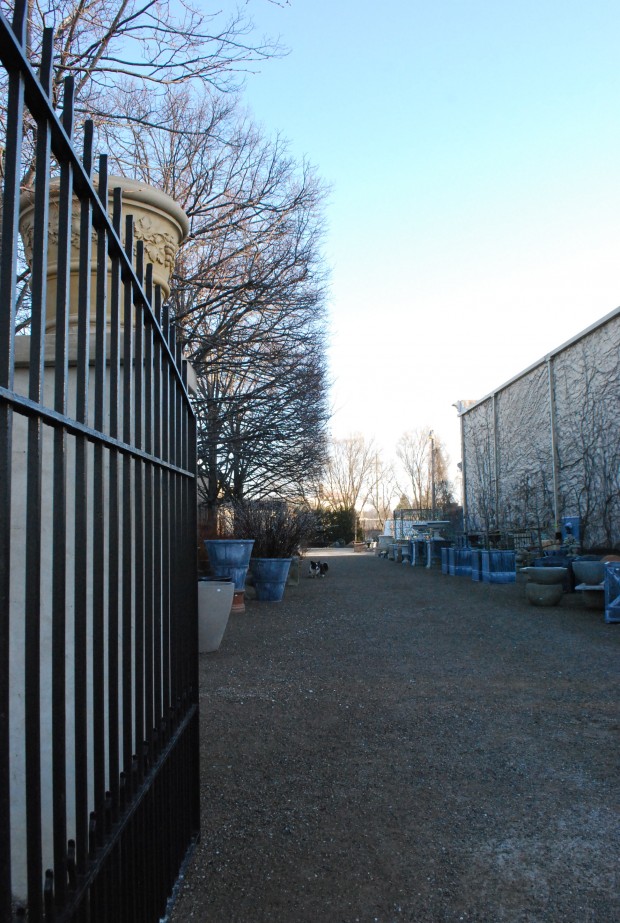
Plants maintained as hedges require regular pruning. The lindens at the shop form a hedge the body of which is above ground. The branches at ground level have been removed over the years so people may walk underneath them. Regular pruning of the trees promotes a good framework of branches that represent the desired shape. These lindens were overdue. Though I am a serviceable pruner of shrubs and roses, this job asks for an expert. Someone who knows how to safely navigate high above the ground, and someone who understands the consequences of each cut, deliberately pruning in anticipation of a desired result.
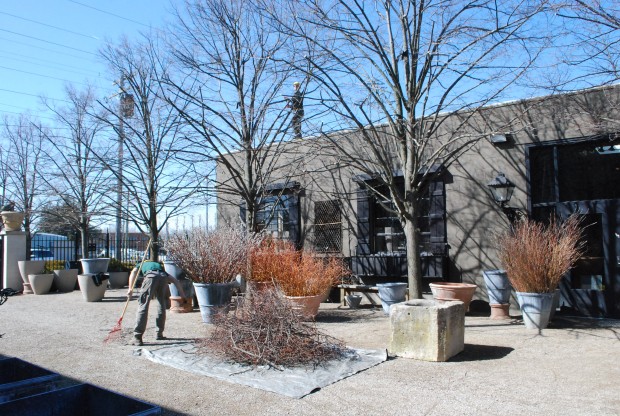 Trees that are trained as an overhead hedge are pruned with the idea of encouraging lateral growth. Anyone who has ever topped a shrub knows that the plant responds to a single cut with multiple sprouting shoots. This results in a dense pattern of twigs on top, which blocks the light to the interior. Every branch of a plant needs light. Shrubs that are repeatedly cut back so every branch is the same length eventually decline on the interior, and will need more drastic pruning to restore them to health from the inside out.
Trees that are trained as an overhead hedge are pruned with the idea of encouraging lateral growth. Anyone who has ever topped a shrub knows that the plant responds to a single cut with multiple sprouting shoots. This results in a dense pattern of twigs on top, which blocks the light to the interior. Every branch of a plant needs light. Shrubs that are repeatedly cut back so every branch is the same length eventually decline on the interior, and will need more drastic pruning to restore them to health from the inside out.
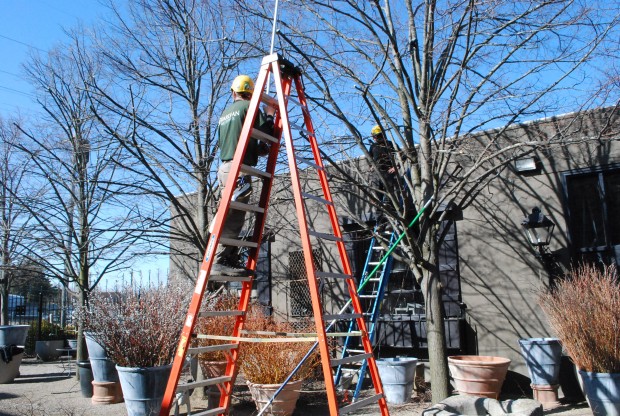
Pruning trees in late winter means there will only be a short time before growth resumes, and the healing of the cuts can begin. Another reason to prune now is that the cuts will stimulate growth at a time of year when new growth is expected. Trees actually stop growing and begin to go dormant in late summer. This is part of the process by which they are eventually able to go totally dormant, and endure the winter without injury. I do not like to prune seriously at the end of the summer or in the fall-the plants should be going to sleep. Not shocked into growth. Pruning these trees the end of March will encourage dormant buds to flush out.
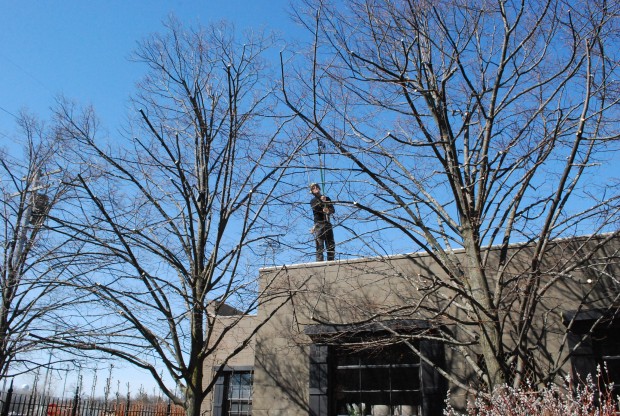 The roof next to the trees turned out to be handy. This perch, and a long and very sharp pole pruner, enabled Jack Richardson, owner of Guardian Tree Experts, to trim the inside flat sides of the lindens.
The roof next to the trees turned out to be handy. This perch, and a long and very sharp pole pruner, enabled Jack Richardson, owner of Guardian Tree Experts, to trim the inside flat sides of the lindens.
When the trees leaf out, those leaves will make a giant rectangle above ground. They will represent this better next year than they will this year. Pruning that waits too long means more time will be needed for the trees to grow in how you envision. The trees were originally planted far enough away from the building so the shape would be easy to see. This also permits light to wash that dark wall. The relationship of the sun to the shade is a feature of this space in the summer.
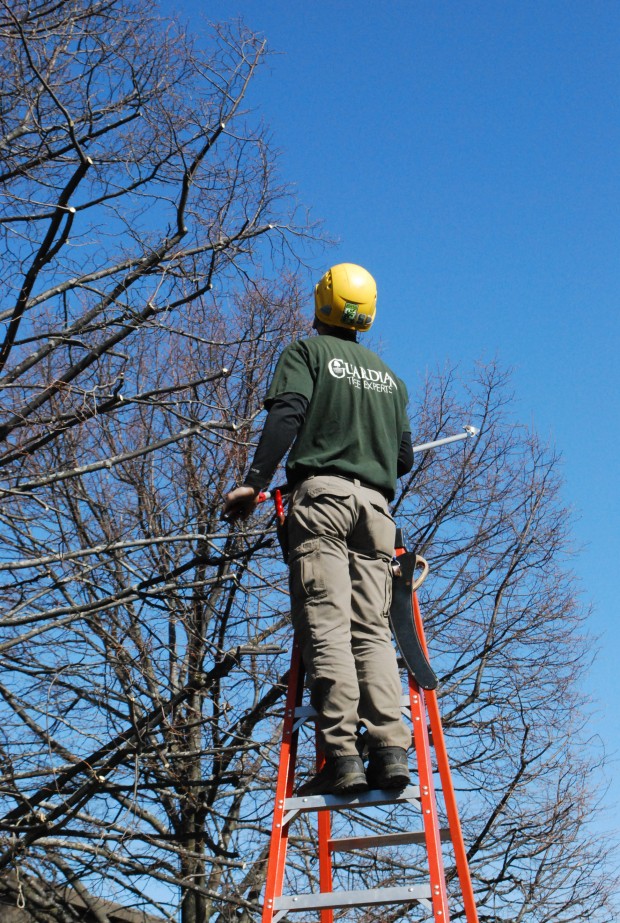 The big cuts make it easy to understand the concept of lateral growth. The thick branches are pruned back to a smaller branch which is already growing in the proper plane. The smaller branch will benefit from the growth energy in the tree directed its way. Dormant buds at this point will emerge, and grow into the space around the larger branch.
The big cuts make it easy to understand the concept of lateral growth. The thick branches are pruned back to a smaller branch which is already growing in the proper plane. The smaller branch will benefit from the growth energy in the tree directed its way. Dormant buds at this point will emerge, and grow into the space around the larger branch.
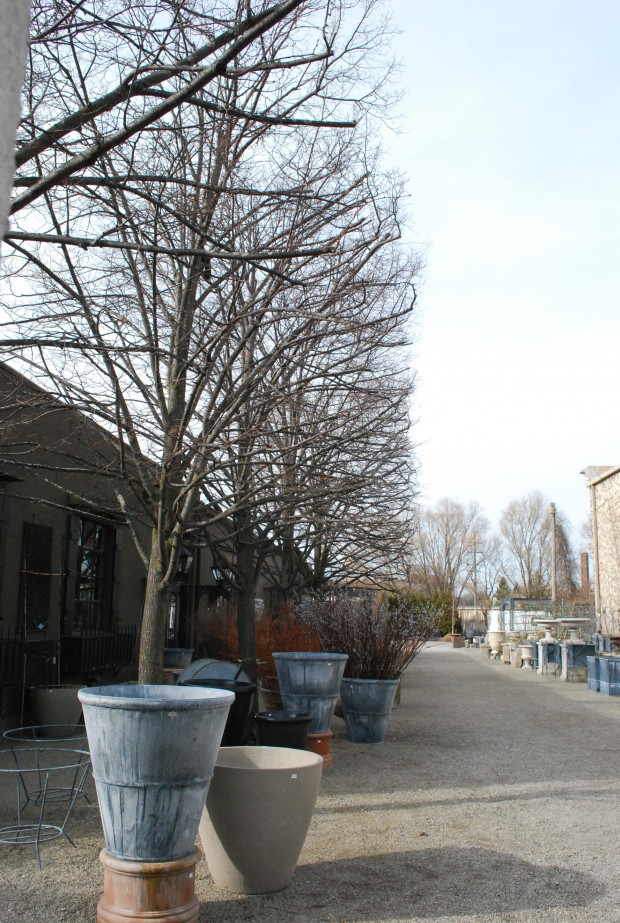 The overall vertical plane has been reestablished. In a year, a decision can be made about whether to prune again, or wait until the following year. That said, frequent and less drastic pruning makes for a quicker recovery time. Regular pruning from the beginning helps to create a strong and healthy structure.
The overall vertical plane has been reestablished. In a year, a decision can be made about whether to prune again, or wait until the following year. That said, frequent and less drastic pruning makes for a quicker recovery time. Regular pruning from the beginning helps to create a strong and healthy structure.
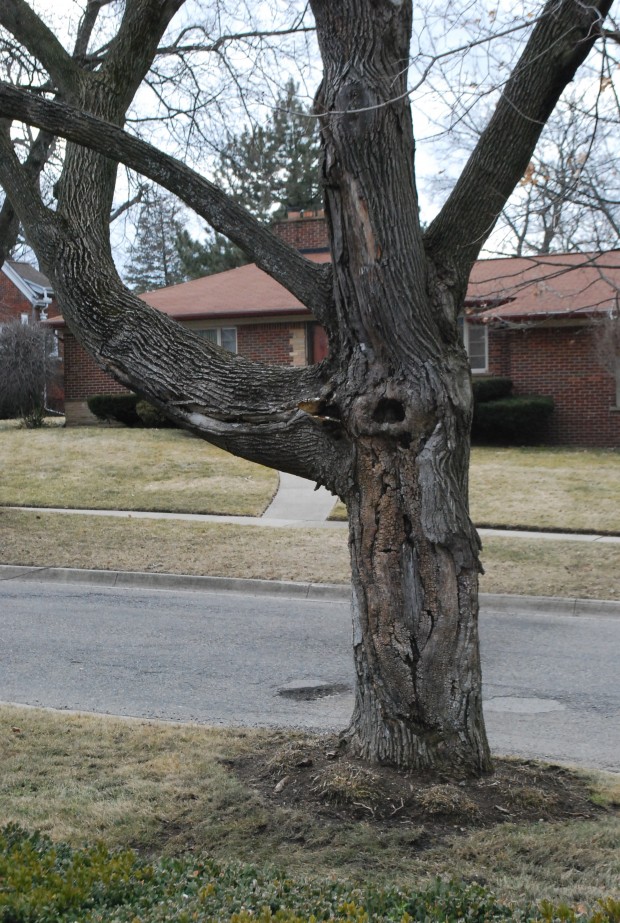 The ultimate pruning means taking a tree down to the ground. This maple, suffering from girdling roots and severe injury from lightning has become a hazard. The large left lateral branch is at such a near horizontal angle that the branch has begun to split. The original wound never really healed, and now the tree has begun to rot. No one could foresee the exact moment that this big tree will give way, but all of the signs are there. This tree needs to come down.
The ultimate pruning means taking a tree down to the ground. This maple, suffering from girdling roots and severe injury from lightning has become a hazard. The large left lateral branch is at such a near horizontal angle that the branch has begun to split. The original wound never really healed, and now the tree has begun to rot. No one could foresee the exact moment that this big tree will give way, but all of the signs are there. This tree needs to come down.
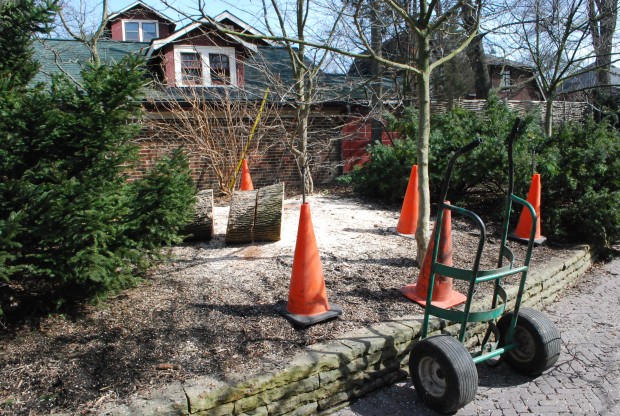 Norway maples are especially prone to girdling roots. A root that encircles a tree trunk can eventually grow enough to strangle the tree. At a certain point, the pruning of the offending root is too late to make a difference. Every one of the maples on my property had significant girdling roots when I moved there. Knowing that this tree would eventually die, I planted other trees around it. The loss of a large tree can be devastating to the community planted underneath it. This maple had been in serious decline for many years. Very little remained of its crown.
Norway maples are especially prone to girdling roots. A root that encircles a tree trunk can eventually grow enough to strangle the tree. At a certain point, the pruning of the offending root is too late to make a difference. Every one of the maples on my property had significant girdling roots when I moved there. Knowing that this tree would eventually die, I planted other trees around it. The loss of a large tree can be devastating to the community planted underneath it. This maple had been in serious decline for many years. Very little remained of its crown.
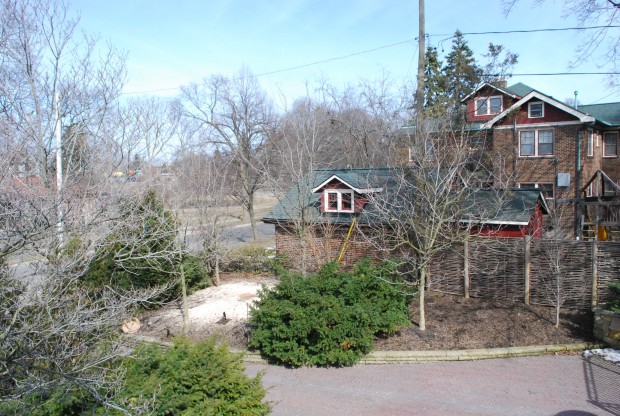
There are 5 trees that were planted fairly close to the maple-2 magnolias, and 3 parrotias. Those trees had been in ground and growing long enough for their upper branches to reach the height of the lower branches of the maple. The time was right to take the maple down. The 5 remaining trees will prosper from the light, space, and less competition for water. They should grow very fast now; their filtered shade will be just what the garden underneath them will need. Guardian Tree Experts in Ann Arbor-they do first rate work. The trees are ready for a little spring weather.

